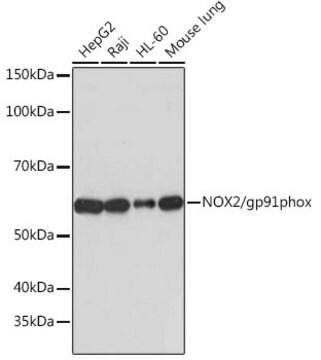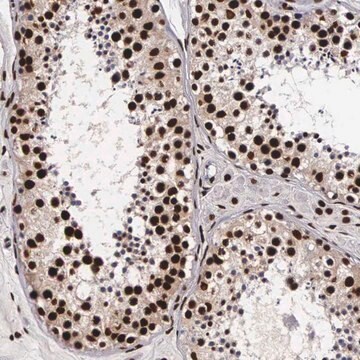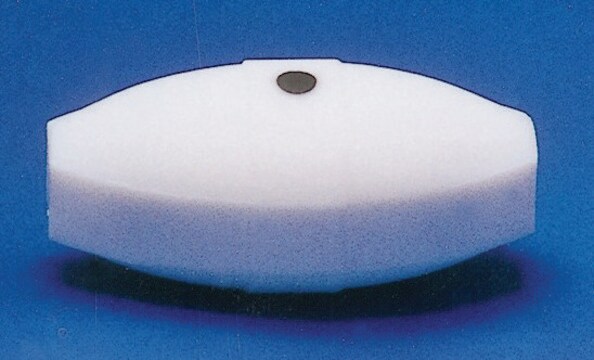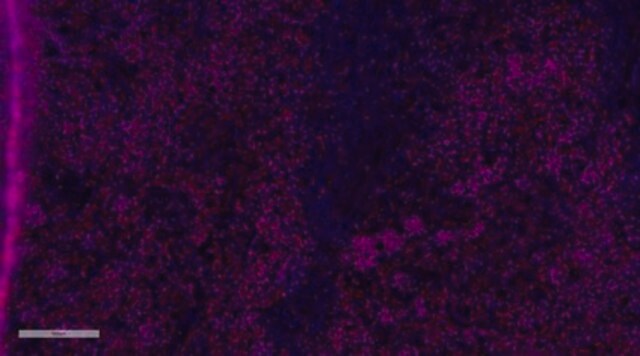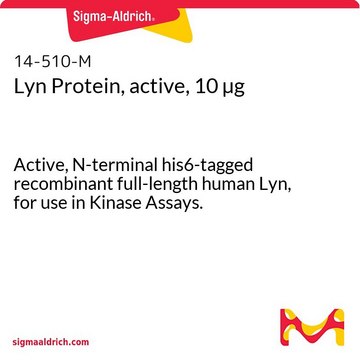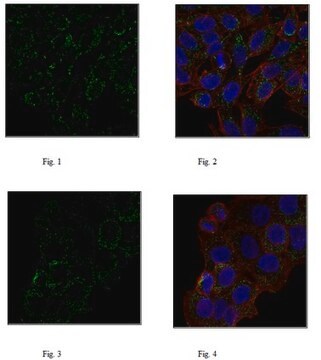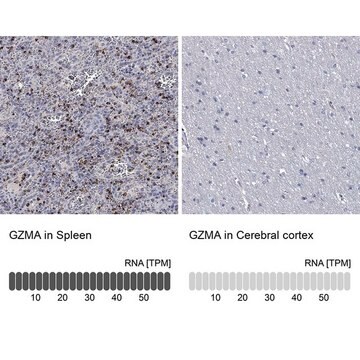MABS21
Anti-PORCN Antibody, clone 15G12.1
clone 15G12.1, from mouse
Synonym(s):
Probable protein-cysteine N-palmitoyltransferase porcupine, Protein MG61
About This Item
WB
western blot: suitable
Recommended Products
biological source
mouse
Quality Level
antibody form
purified immunoglobulin
antibody product type
primary antibodies
clone
15G12.1, monoclonal
species reactivity
rat, mouse, human
technique(s)
immunocytochemistry: suitable
western blot: suitable
isotype
IgMκ
NCBI accession no.
UniProt accession no.
shipped in
wet ice
target post-translational modification
unmodified
Gene Information
mouse ... Porcn(53627)
General description
Immunogen
Application
Signaling
Developmental Signaling
Quality
Western Blot Analysis: A 1:1,000 dilution of this antibody detected PORCN in 10 µg of mouse brain tissue lysate.
Target description
Calculated molecular weight of 52 kDa The actual MW should be observed at ~45-65 kDa Helical membrane protein migration on SDS-PAGE may not exactly correlate with the calculated molecular weights (PNAS, 2009, 106:1760-1765).
Physical form
Storage and Stability
Analysis Note
Mouse brain tissue lysate
Other Notes
Disclaimer
Not finding the right product?
Try our Product Selector Tool.
Storage Class Code
10 - Combustible liquids
WGK
WGK 2
Flash Point(F)
Not applicable
Flash Point(C)
Not applicable
Certificates of Analysis (COA)
Search for Certificates of Analysis (COA) by entering the products Lot/Batch Number. Lot and Batch Numbers can be found on a product’s label following the words ‘Lot’ or ‘Batch’.
Already Own This Product?
Find documentation for the products that you have recently purchased in the Document Library.
Our team of scientists has experience in all areas of research including Life Science, Material Science, Chemical Synthesis, Chromatography, Analytical and many others.
Contact Technical Service
